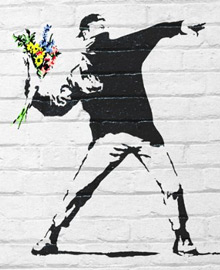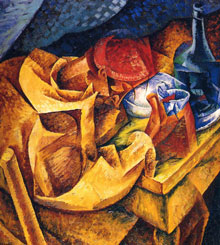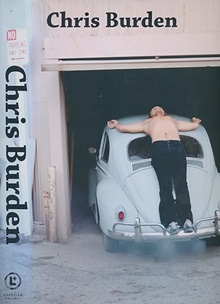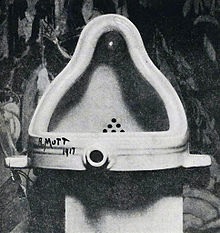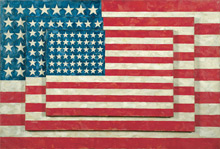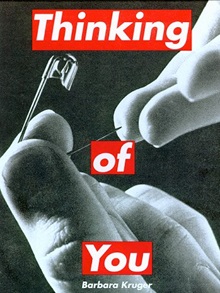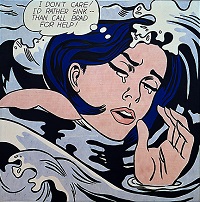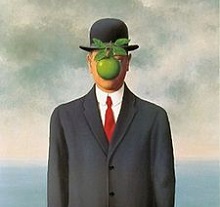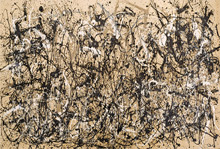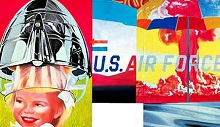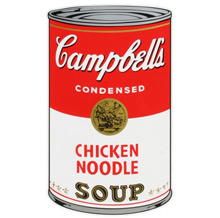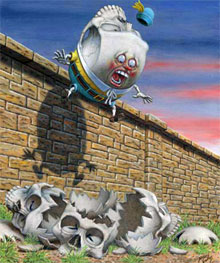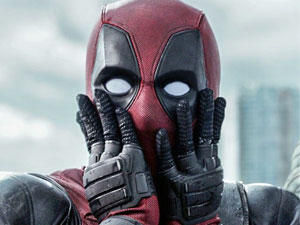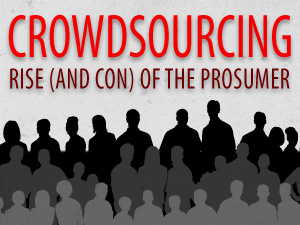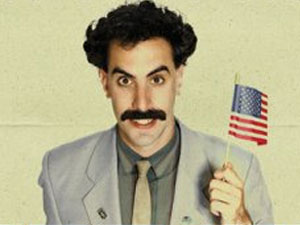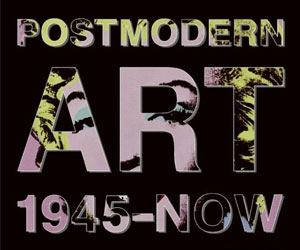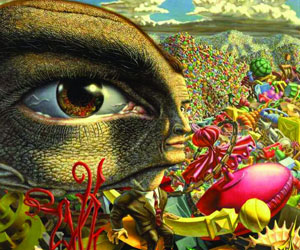Overview of Postmodern Art
As with all definitions of postmodernism, postmodernist art is characterized as a rebellion against the modern (including realism and the artistic elite). There are actually several, often overlapping, avant-garde art movements associated with the birth of postmodernism. The most notable of these are described below:
| Postmodern | Culmination where all artistic novelty has been previously explored and meaning is replaced by fashion |
| Futurism | Early rebels against tradition who expressed a love for speed, technology and violence |
| Dada | A form of nihilistic anti-art which was ironically legitimized and commercialized (includes Duchamp's "readymades") |
| Surrealism | Style which pursues a dream-like state, perceived as "truer" than reality |
| Pop Art | Emphasizes kitschy "low art", mass-production, and commodification of culture. Warhol is the "Pope of Pop Art" |
| Lowbrow Art | Also known as Pop Surrealism, this democratization of art originated in California's hot rod and comics cultures |
| Conceptualism | Deconstruction of what makes something "art", designed to confront viewers and their concept of art |
| Appropriation | Repurposed objects or existing art, that with minimal transformation, subversively gives them new meaning and context |
| Decollage | Images given new meaning by tearing or removal, started with a mashup of commercial posters and those underneath |
| Bricolage | Art technique where works are constructed from various available materials ("found items" or mass-produced "junk") |
Postmodern Artists
Examples of Postmodern Art
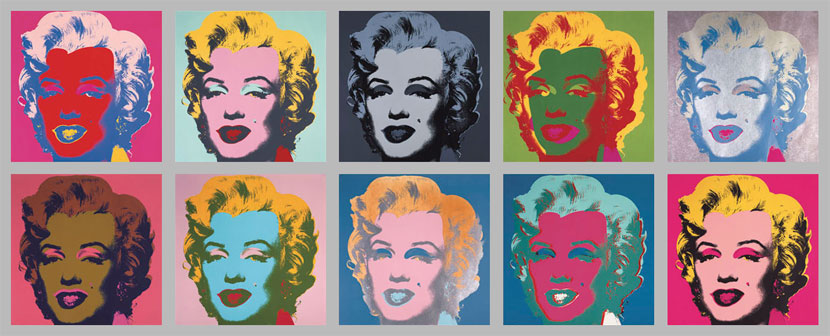 10 Marylins, 1967 by Andy Warhol
10 Marylins, 1967 by Andy Warhol
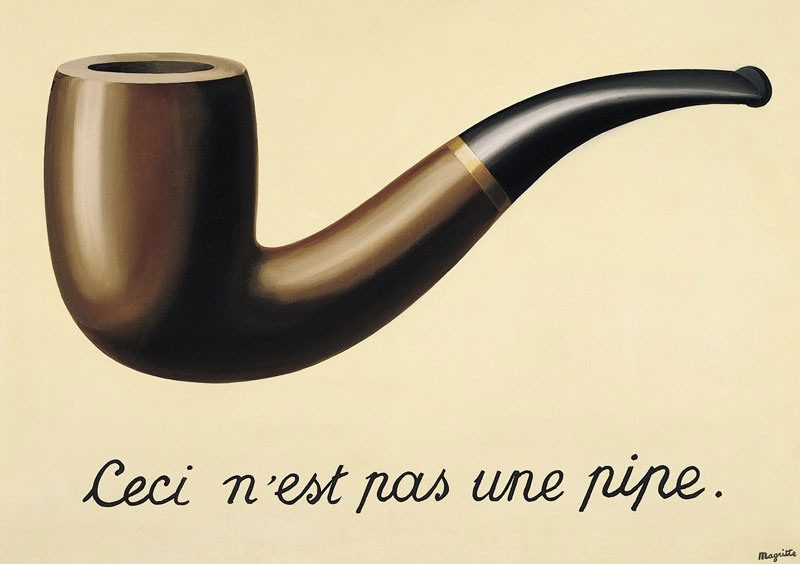 La Trahison Des Images (The Treason of Images, "This is not a pipe"), 1929 by Rene Magrite
La Trahison Des Images (The Treason of Images, "This is not a pipe"), 1929 by Rene Magrite
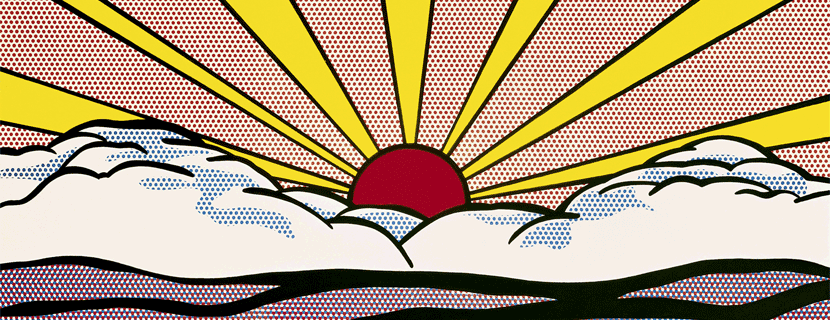 Sunrise, 1965 by Roy Lichtenstein
Sunrise, 1965 by Roy Lichtenstein
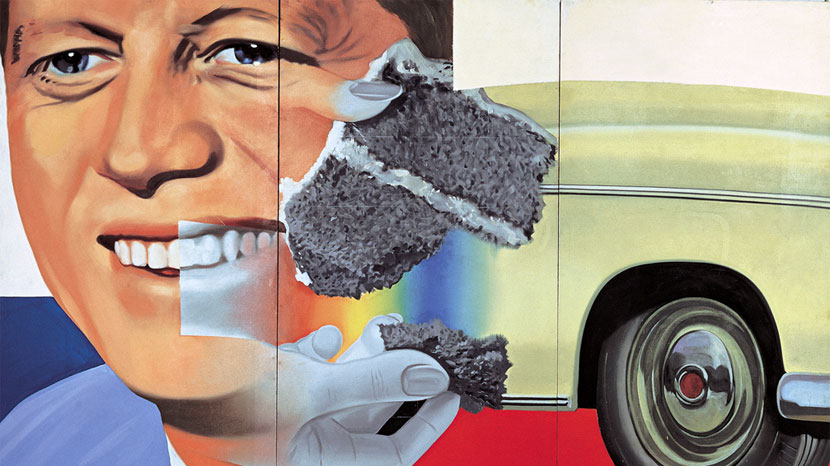 President Elect, 1961 by James Rosenquist
President Elect, 1961 by James Rosenquist
Museums Featuring Postmodern Art
Center On Contemporary Art - Seattle gallery dedicated to the advancement, development, and understanding of contemporary art
Contemporary Museum of Art - Baltimore's Contemporary Museum of Art
Guggenheim, Bilbao - One of Guggenheim's new European centers whose iconic architecture has eclipsed the original's
Guggenheim, New York - Famous collection of both modern and contemporary works
Los Angles County Museum of Art - At the time of this writing is currently holding an exhibition on Magritte
Metropolitain Museum of Art - One of the largest museums in the world, features a wide array of Postmoden artists including Warhol
Millenium Park - Chicago center for art, music, architecture and landscape design which itself is a postmodern icon
Museum of Contemporary Art, San Diego - La Jolla museum with works from artists like Chris Burden and Barbara Kruger
Museum of Contemporary Art, Chicago - Devoted to contemporary culture including painting, sculpture, photography, video and film
Museum of Modern Art, New York - Dedicated to being the world's foremost museum of modern art, features Rosenquist's F-111
Philadelphia Museum of Art - Boasts a wide collection of both modern and contemporary art
San Francisco Museum of Modern Art - Boasts a large collection of technology and media arts
The Warhol - Site of the official Andy Warhol Museum
Articles and Critiques
Unacknowledged Roots and Blatant Imitation: Postmodernism and the Dada Movement - Paper by David Locher
New York Art Crit - Art history and reviews by John Haber
Why Art Became Ugly - Critique of Postmodern Art by Stephen Hicks
General Links on Postmodern Art
Postmodern Art - Definition at Wikipedia
Postmodern Artists - List from Wikipedia.org
Books on Postmodern Art
Post Modern Art: 1945-Now
- by Francesco Poli, explores the currents, themes, and names that are part of the artistic heritage of today, from Art Informel to New Dada to body and video art. Its sixteen chapters present painters, sculptors, photographers, and architects with their most important works, many of them results of the close identification between art and life.
After Modern Art 1945-2000 (Oxford History of Art)
- by David Hopkins, covers artists including Jackson Pollock, Jasper Johns, Yves Klein, Andy Warhol, Louise Bourgeois, Cindy Sherman, and Damien Hirst. Highlights key movements such as Abstract Expressionism, Pop Art, Minimalism, Conceptualism, and Postmodernism.
Art of the Postmodern Era: From The Late 1960s To The Early 1990s
- by Irving Sandler, Art of the Postmodern Era surveys the artists, works, movements, and ideas as well as the social and cultural context of this energetic and turbulent period in art.
Postmodern Perspectives: Issues in Contemporary Art
- by Howard Risatti, explores the relationship between contemporary art, culture, and society, and offers non-specialists a guide to the general structure and focus of Postmodern critical discourse, preparing them to understand the origins, theories, and interrelated ideas of Postmodern art and art criticism within a broader social and political context.
The Annotated Mona Lisa: A Crash Course in Art History from Prehistoric to Post-Modern
- by Carol Strickland, offers an illustrated tutorial of prehistoric to post-modern art from cave paintings to video art installations to digital and Internet media.
Teaching Art in a Postmodern World
- by Lee Emery, discusses changes in art education needed to deal with the differences in how postmodern theory directs attention away from the formalist properties of art works to the social conditions and structures which shape artistic values (often done using devices such as irony, parody or shock).

